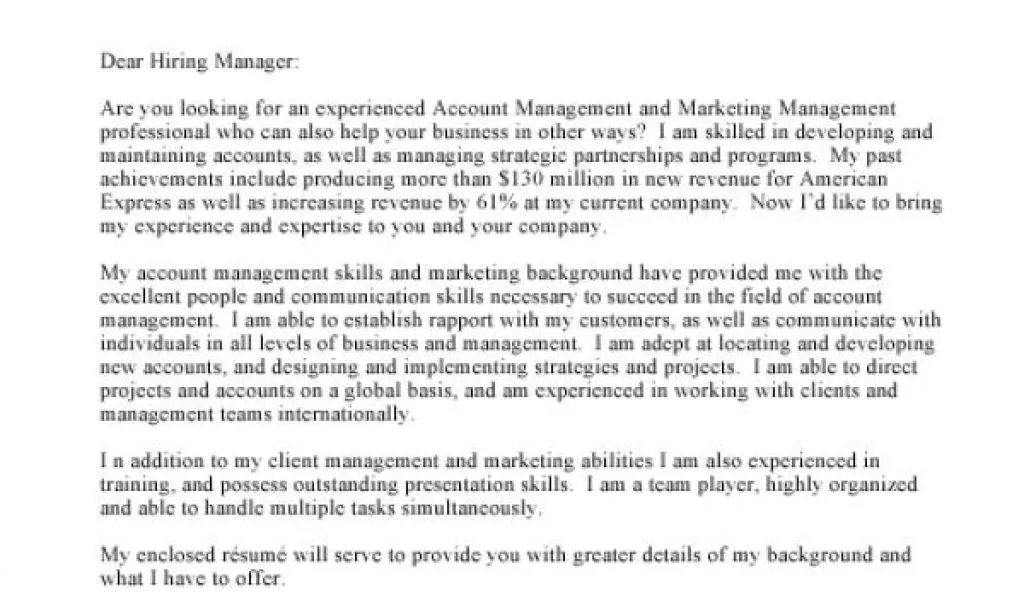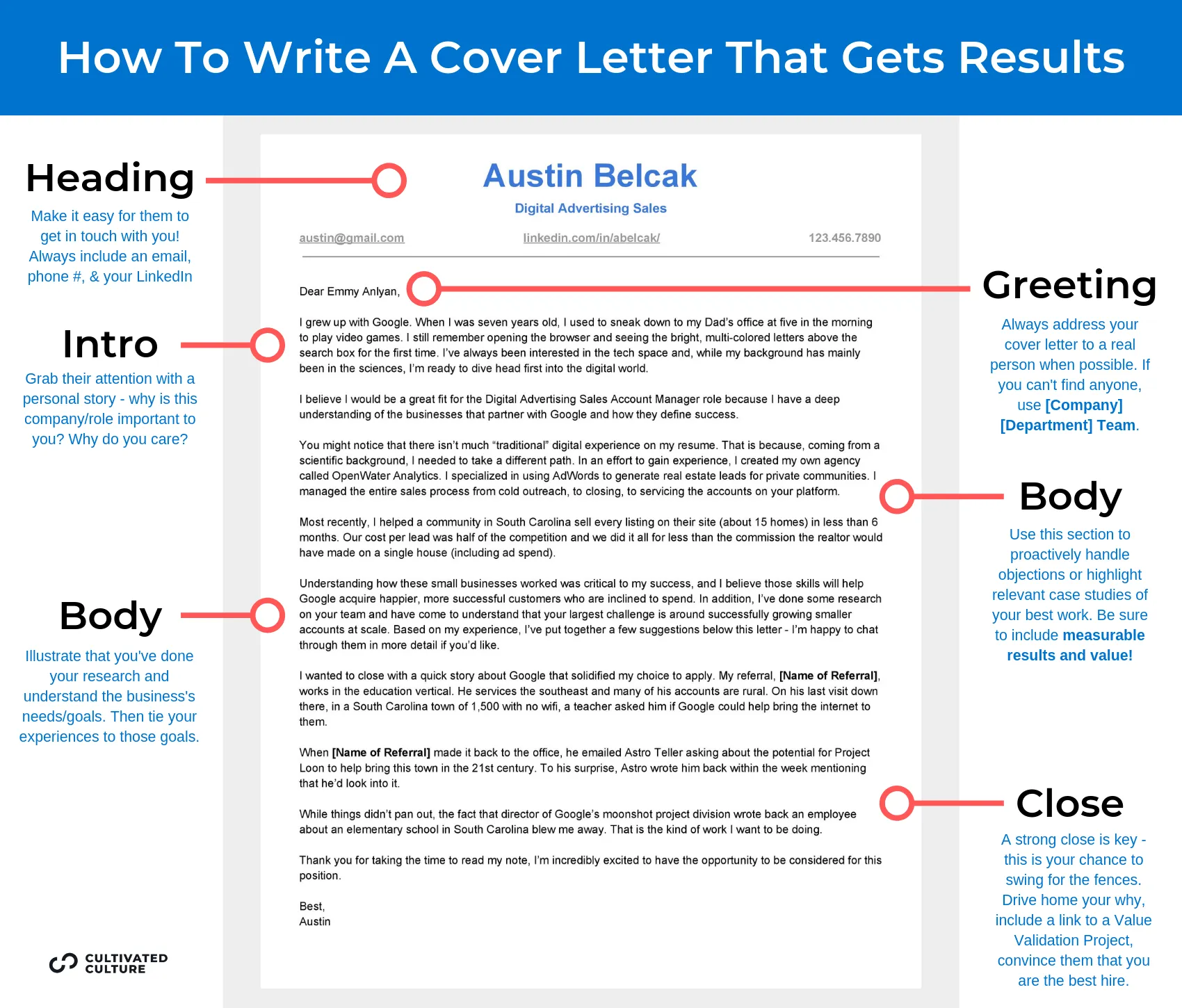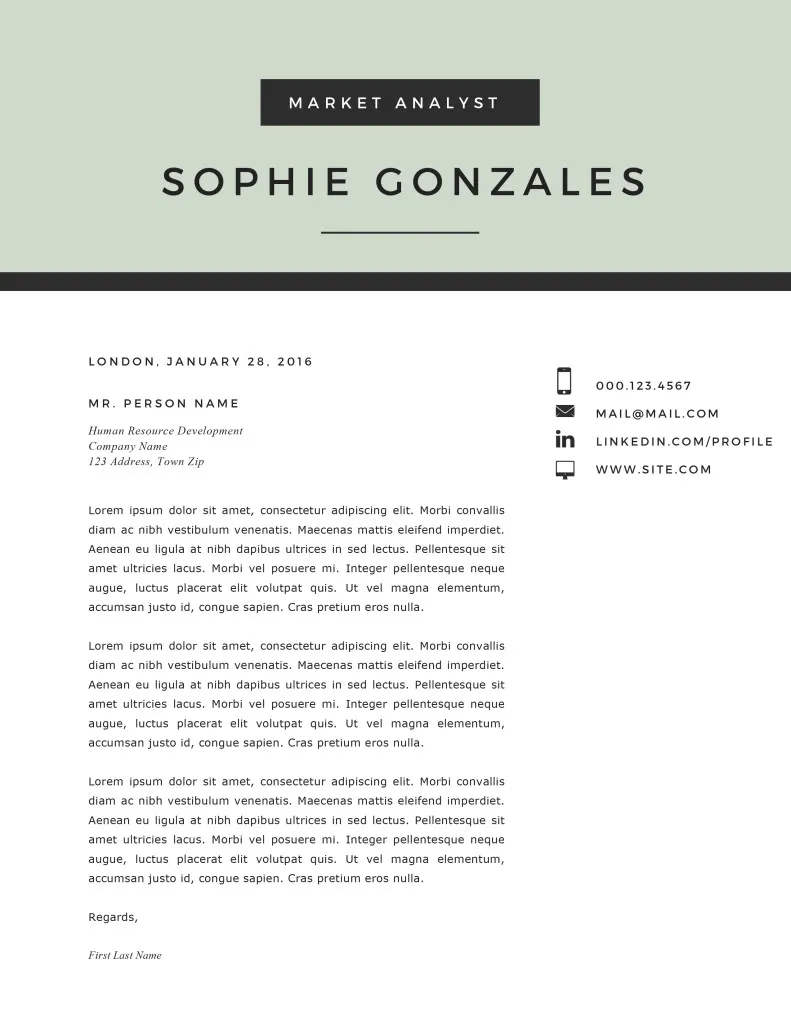Why Cover Letters Matter
In the competitive world of job hunting, a well-crafted cover letter can be your secret weapon. While resumes provide a snapshot of your skills and experiences, a cover letter offers the opportunity to tell your story, showcase your personality, and demonstrate why you’re the perfect fit for the role. It’s your chance to make a strong first impression and persuade the hiring manager to delve deeper into your qualifications. A cover letter is not just a formality; it’s a critical component that can significantly increase your chances of landing an interview. By highlighting your unique strengths and aligning them with the job requirements, you can set yourself apart from other applicants. It demonstrates your genuine interest and shows the employer that you’ve taken the time to understand their needs and how you can meet them effectively. Therefore, investing time in creating a compelling cover letter is a worthwhile endeavor in your job search journey.
Key Elements of a Strong Cover Letter
To write a compelling cover letter, you must include several key elements that work together to highlight your qualifications and make a strong impression. These include your contact information, the recruiter’s details, a professional salutation, a strong opening paragraph, a body of text showcasing your skills and experience, a demonstration of your enthusiasm for the role, a clear call to action, and a well-formatted and proofread final document. Each section plays a vital role in conveying your qualifications, personality, and interest in the position. By carefully including these components, you can create a cover letter that effectively captures the attention of potential employers and significantly increases your chances of landing an interview. A strong cover letter is more than just a summary of your resume, it’s a narrative that connects your skills, experiences, and career goals with the specific requirements and expectations of the job and the hiring company.
Your Contact Information

Your cover letter should begin with your contact information at the top. This allows the hiring manager to quickly find your contact details. Include your full name, phone number, email address, and, optionally, your LinkedIn profile URL. Make sure the information is accurate and up-to-date. This section is crucial because it provides the hiring manager with essential details to contact you quickly. It’s best to use a professional-sounding email address; avoid nicknames or unprofessional handles. Ensure that your phone number is reachable, and your voicemail is set up with a professional greeting. Additionally, including a link to your LinkedIn profile is a smart move, as it allows recruiters to easily learn more about your professional background and network.
The Recruiter’s Contact Information
Directly below your contact details, include the recruiter’s information. If the job posting names the hiring manager or a specific person to address, use that information. If not, you can typically find the name of the hiring manager on the company’s website or LinkedIn. Always address your cover letter to a specific person whenever possible, rather than using a generic salutation like ‘To Whom It May Concern’. Providing the recruiter’s contact information shows you have taken the time to research the company and shows your attention to detail. This personal touch demonstrates initiative and a genuine interest in the position. If you can’t find a specific name, it’s acceptable to use a general title, like ‘Hiring Manager’, but personalizing the letter is always the preferred approach.
A Professional Salutation
Start your cover letter with a professional salutation. The most appropriate salutation is ‘Dear [Mr./Ms./Mx. Last Name]’. If you don’t know the hiring manager’s name, use ‘Dear Hiring Manager’ or ‘Dear [Company Name] Hiring Team’. Avoid overly casual greetings such as ‘Hello’ or ‘Hi’. The salutation sets the tone for the rest of the letter and should project a respectful and professional image. It is important to use the correct title (Mr., Ms., or Mx.) for the person you are addressing. Pay attention to the format and maintain a professional tone. By using a proper salutation, you show your respect for the recipient and your understanding of professional communication etiquette. A well-chosen salutation gives a positive first impression before the reader even starts to examine the contents of your cover letter.
A Compelling Opening Paragraph

Your opening paragraph is your chance to grab the reader’s attention and make them want to read the rest of your letter. Briefly state the position you are applying for, where you found the job posting, and a concise summary of why you are a good fit. Show your enthusiasm for the role and the company. Avoid generic introductions; instead, make your opening paragraph compelling and tailored to the specific job and company. This will immediately show the hiring manager that you are serious about the opportunity and have put thought into your application. A strong opening immediately sets the tone and can encourage the reader to invest more time into reviewing your application. State your name and mention something specific that sparked your interest in the position. The opening paragraph can make or break a reader’s initial perception of your cover letter and your application.
Highlighting Your Skills and Experiences
The body of your cover letter is where you demonstrate how your skills and experiences match the job requirements. Provide specific examples of your accomplishments and how they align with the needs of the role. Use action verbs to describe your contributions and quantify your achievements whenever possible. This helps the recruiter visualize your capabilities and the value you can bring to the company. Focus on the key skills and experiences that are most relevant to the job. Tailor your letter to the specific requirements of each position. Avoid simply repeating what’s in your resume. Expand on your experiences, providing more context and highlighting specific achievements that demonstrate your ability to succeed in the position. This section is your chance to show the reader that you can perform the duties listed on the job description.
Tailoring Your Letter to the Job
Customize your cover letter for each job application. This is one of the most important aspects of writing a successful cover letter. Review the job description carefully and align your skills and experiences with the specific requirements and keywords mentioned. Generic cover letters are easy to spot, and they often fail to impress hiring managers. Demonstrate your understanding of the company and the role. Research the company and show that you understand their values, mission, and culture. This shows that you’re genuinely interested in the opportunity and haven’t simply sent out a generic application. Tailoring your letter demonstrates that you have taken the time to understand the specific needs of the position and highlights how your unique skills and experiences align with them.
Demonstrating Your Enthusiasm

Express your enthusiasm for the position and the company throughout your cover letter. Show your genuine interest in the role and explain why you’re excited about the opportunity. Mention specific aspects of the company that appeal to you, such as their mission, values, or products. Enthusiasm is contagious and can leave a lasting positive impression on the hiring manager. This shows that you are motivated and eager to contribute. You can also mention any previous interactions you may have had with the company or their products. Demonstrating a genuine interest can help you stand out from other applicants. Showing enthusiasm makes you more appealing to the hiring manager and is one of the best ways to get yourself hired. By expressing your eagerness to learn and grow within the company, you highlight your commitment and potential for long-term success.
Call to Action Request an Interview
Conclude your cover letter with a clear call to action. State your interest in an interview and thank the hiring manager for their time and consideration. Reiterate your enthusiasm for the role and make it easy for them to take the next step. Indicate your availability for an interview. This is your final opportunity to make a strong impression and move your application forward. Ensure that your contact information is readily available. A well-written call to action leaves the hiring manager with a clear understanding of your interest and how to proceed. Consider ending with a phrase like, ‘I look forward to the opportunity to discuss my qualifications further in an interview.’ This final closing remark encourages the recruiter to reach out and start a conversation.
Proper Formatting and Proofreading
Pay close attention to formatting and proofreading. Use a professional font, such as Times New Roman, Arial, or Calibri, and ensure that your cover letter is easy to read. Maintain consistent margins and spacing. Proofread your cover letter carefully for any grammatical errors, spelling mistakes, or typos. Errors can detract from your professionalism and negatively impact your chances. It’s essential to present a polished and error-free document. Read your cover letter out loud to catch any awkward phrasing. Get a second pair of eyes to review your cover letter. Proper formatting and careful proofreading show your attention to detail and your commitment to excellence. A well-formatted and error-free cover letter will impress the hiring manager and significantly improve your chances of securing an interview.
